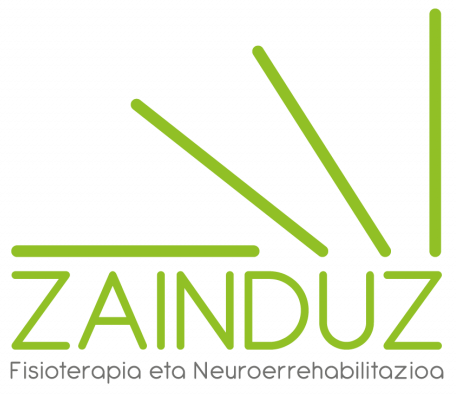
In this context, the different dopaminergic changes in actively drinking versus repeated abstinence males are intriguing. Given our findings showing differences in dopamine release, it might be does alcohol trigger dopamine assumed that these effects are attributable to changes in presynaptic dopamine terminals. It should be noted, however, that our study utilized electrical stimulation to induce dopamine release.
How Alcohol Impacts the Brain
The characteristics of this disorder include loss of control over alcohol intake, impaired cognitive functioning, negative social consequences, physical tolerance, withdrawal and craving for alcohol. To date, there are three medications approved by both the European Medicines Agency (EMA) and the Food and Drug Administration (FDA) for the treatment of alcohol dependence; disulfiram, naltrexone and acamprosate. More recently, the EMA granted authorization also for nalmefene, a compound intended for the reduction of alcohol consumption in adults with alcohol dependence (EMA 2012). Details regarding the mechanism of action of these compounds are outside the scope of this review. An indirect activation of mesolimbic dopamine via accumbal glycine receptors and ventral tegmental nicotinic acetylcholine receptors (nAChRs) appears likely [2, 3], but additional targets has been suggested (for review see [4]).
Extended Data Fig. 9 Schematic diagrams for structures of dDAT and hDAT.
- Fortunately, cognitive impairments created by alcohol are reversible with abstinence.
- Thus, there has been a renewed interest in evaluating these medications as potential treatment for alcohol dependence with the assumption that the atypical antipsychotics might reduce craving and consumption of alcohol without the substantial adverse effect profile [152].
- Read on to learn more about the myths and facts surrounding dopamine’s role in addiction.
- Emerging data suggests that the activity of dopamine neurons in the VTA projecting to the NAc is regulated by several afferents, such as, for example the cholinergic neurons projecting from the laterodorsal tegmental nucleus (LDTg) (for review see [204]).
By studying knockout mice that lack a particular receptor, researchers can assess that receptor’s role in specific aspects of brain functioning and behavior, including responses to alcohol and alcohol consummatory behavior. For example, scientists have studied a strain of knockout mice lacking the 5-HT1B receptor with respect to the effects of acute alcohol exposure (Crabbe et al. 1996). These animals exhibited reduced intoxication in response to a single dose of alcohol compared with normal mice, indicating that 5-HT1B receptor activity produces some of alcohol’s intoxicating effects. Studies elucidating the underlying mechanism of action of the complex dopamine–alcohol interaction have been conducted.

Drinking and Driving

Although alcohol’s direct interaction with this cholinergic‐dopaminergic reward link remains to be fully elucidated, a study show that voluntary alcohol intake in high‐alcohol‐consuming rats causes a concomitant release of ventral tegmental acetylcholine and accumbal dopamine [39]. These nAChR antagonists are limited in a clinical setting due to low blood–brain barrier permeability and an unfavourable side effect profile. The potential of nAChR’s as novel treatment target was revived with the marketing of the partial nAChR agonist varenicline as a smoking cessation agent.
Mann and his colleagues conducted a clinical trial to investigate the effectiveness of nalmefene in reducing alcohol consumption. They recruited 604 alcohol-dependent patients, half of whom randomly received nalmefene. Neither patients nor their doctors knew which treatment they were receiving. Patients were instructed to take one tablet on days when they perceived a risk of drinking alcohol.
Other research indicates that some people tend to have a higher release of and response to dopamine than others. In addition, those individuals may be predisposed to drink more heavily and develop an alcohol addiction. A small study by researchers at Columbia University revealed that the dopamine produced during drinking is concentrated in the brain’s reward center.

Nicotine, alcohol, or other drugs with addictive qualities activate the dopamine cycle. Very high levels of dopamine can make you feel on top of the world, at least for a while. We take a look at dopamine’s many roles and the signs that your dopamine levels are off. Managing your drinking and getting the right support are really important for your mental health. Although alcohol is often described as a ‘depressant’, that’s not quite the same as saying it will make you depressed.
Alcohol-induced changes in brain functions can lead to disordered cognitive functioning, disrupted emotions and behavioral changes. Moreover, these brain changes are important contributing factors to the development of alcohol use disorders, including acute intoxication, long-term misuse and dependence. For the determination of dopamine transient uptake kinetics, the modeling module in DEMON was used as previously described [30]. To examine D2/3 dopamine autoreceptor function, the D2/3 dopamine receptor agonist, quinpirole (30 nM), was bath applied for 30 min and was followed by application of the D2-like dopamine receptor antagonist sulpiride (2 µM) for 15 min. To examine differences between tonic and phasic release, we applied stimuli at varying frequencies before and after the application of the β2 subunit-containing nAChR antagonist, dihydro-β-erythroidine hydrobromide (DHβE; 1 µM). DHβE was applied to slices to isolate dopamine axons from the influence of nAChRs.

The dopamine (DA) system in the CNS includes the nigrostriatal pathway, the mesolimbic pathway and the tuberoinfundibular pathway. Dopamine is mainly produced in the substantia nigra, projected along the nigrostriatal pathways and stored in the striatum. All of them function both individually and interactively as G-protein coupled receptors. The detailed necropsy procedures used to harvest tissues [28] and obtain ex vivo slices [8] have been previously described. A block containing the caudate and putamen was microdissected from the left hemisphere and sectioned with a VT1200S (Leica, Buffalo Grove, IL) in a sucrose cutting solution aerated with 95% O2/5% CO2 (see Supplementary Materials for composition). A ceramic blade (Camden Instruments Limited, Lafayette, IN) was used for sectioning 250 µm slices that were equilibrated at 33 °C for 1 h in equilibration ACSF before being moved to room temperature for an additional hour before beginning experiments.
The dopamine system and alcohol dependence
- Here at Sunnyside, we use the science behind habits to help you reach your goals.
- An example of an excitatory neurotransmitter is glutamate, which would normally increase brain activity and energy levels.
- Dopamine is a neuromodulator that is used by neurons in several brain regions involved in motivation and reinforcement, most importantly the nucleus accumbens (NAc).
As a result, our treatment plans incorporate pharmacological treatments with traditional counseling sessions for patients with high-risk dependence behaviors. It increases your general level of arousal and your goal-directed behavior. Dopamine makes you curious about ideas and fuels your search for information. Dopamine creates reward-seeking loops in the sense that people will repeat pleasurable behavior, from checking Instagram to taking drugs.
